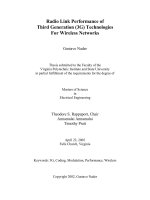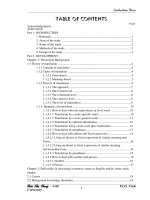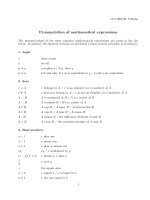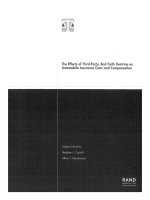Pronunciation of Third Person Singular
Bạn đang xem bản rút gọn của tài liệu. Xem và tải ngay bản đầy đủ của tài liệu tại đây (65.38 KB, 2 trang )
Pronunciation of Third Person Singular
Note: The letters between the slash marks / / refer to sounds, not to spelling.
1. The -(e)s of the simple present tense is pronounced as /z/ after a voiced sound, except
/z/, /zh/, and /j/. The voiced sounds are sounds that are produced by vibration of the vocal
chords. The voiced sounds in English are:
a. All vowels
b. /b/, /g/, j sound (as in judge), /l/, /m/, /n/, /r/, voiced th (as in bathe), /v/, ng (as in
bang), zh sound (as in measure), z sound (as in buzz)
Examples: plays, sees, goes, robs, hangs, calls, rams, learns, blurs, clothes, receives
2. The -(e)s of the simple present tense is pronounced as /s/ after a voiceless sound, except
/s/, /sh/, and /ch/. The voiceless sounds are sounds that are produced with no vibration of the
vocal chords. The voiceless sounds in English are:
a. /f/, /k/, /p/, /s/, voiceless th (as in with), ch (as in watch), sh (as in wash)
Examples: laughs, talks, stops
3. When a word ends in /s/, /sh/, /ch/, /z/, /j/ the -es is pronounced as a separate syllable: /ɪz/.
Therefore, if a verb ends in one of these sounds, the present tense will have one more
syllable than the simple form.
Examples:
fix (1 syllable)-->fixes (2 syllables)
kiss (1 syllable)-->kisses (2 syllables)
wash (1 syllable)-->washes (2 syllables)
watch (1 syllable)-->watches (2 syllables)
damage (2 syllables)-->damages (3 syllables)
memorize (3 syllables)-->memorizes (4 syllables)
exercise (3 syllables)-->exercises (4 syllables)









